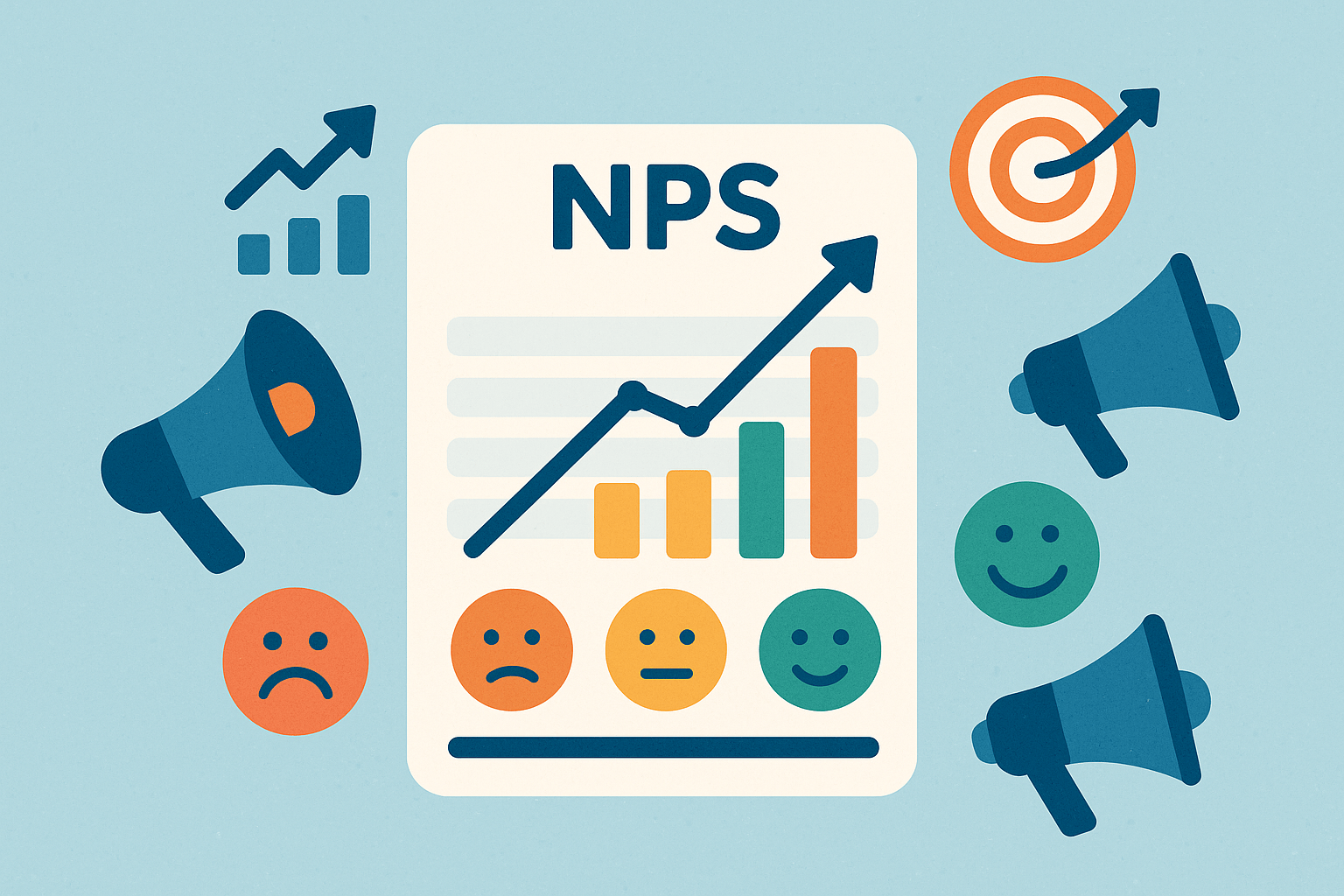Introduction
Net Promoter Score (NPS) is one of the most widely used metrics to assess customer loyalty. But how exactly is it calculated, and why does it matter?
In this guide, we’ll cover:
- 1. How to calculate NPS step-by-step
2. Examples of NPS calculations
3. How to interpret NPS scores
What is NPS?
Net Promoter Score (NPS) measures customer loyalty by asking a simple question:
“On a scale of 0 to 10, how likely are you to recommend [Company/Product] to a friend or colleague?”
Based on the response, customers are categorized as:
- Promoters (9–10): Loyal enthusiasts who will keep buying and refer others.
- Passives (7–8): Satisfied but unenthusiastic customers.
Detractors (0–6): Unhappy customers who may damage your brand through negative word-of-mouth.

How to Calculate NPS: The Formula
The NPS formula is straightforward:
NPS = % of Promoters – % of Detractors
Step 1: Collect Responses
- – Distribute the NPS survey to your target audience.
– Ensure responses are categorized as Promoters, Passives, and Detractors.
Step 2: Calculate the Percentage of Promoters
- – Count the number of Promoters (9–10 ratings).
– Divide by the total number of respondents and multiply by 100.
Example:
- 100 total responses
- 40 Promoters (9–10 ratings)
- Promoters % = (40/100) × 100 = 40%
Step 3: Calculate the Percentage of Detractors
- – Count the number of Detractors (0–6 ratings).
– Divide by the total number of respondents and multiply by 100.
Example:
- 20 Detractors (0–6 ratings)
Detractors % = (20/100) × 100 = 20%
Step 4: Apply the NPS Formula
NPS = 40% – 20% = 20
In this example, the NPS score is 20, indicating a moderately positive score.

Step 5: Interpret the NPS Score
- 1. -100 to 0: Negative – More detractors than promoters.
2. 1 to 30: Average – Some positive word-of-mouth, but areas for improvement.
3. 31 to 50: Good – Strong customer loyalty.
4. 51 to 70: Excellent – Customers actively promoting your brand.
5. 71 to 100: World-Class – Unmatched customer advocacy.
Example: NPS Calculation in Banking
A retail bank in India conducted an NPS survey with 500 customers:
- – 250 rated 9–10 (Promoters)
– 150 rated 7–8 (Passives)
– 100 rated 0–6 (Detractors) - Promoter % = (250/500) × 100 = 50%
- Detractor % = (100/500) × 100 = 20%
NPS = 50%-20 % = 30 (a positive but average score in banking)
Common Pitfalls in NPS Calculation
- 1. Not Including All Responses: Ensure all customer feedback is categorized appropriately.
2. Misclassifying Scores: Only 9–10 are Promoters, not 7–8. - 3. Ignoring Passives: While they don’t impact the NPS calculation, passives should still be addressed to convert them into promoters.
How Zykrr Helps You Measure NPS
Zykrr’s CXM platform includes:
- 1. Automated NPS surveys across multiple channels
2. Real-time NPS analytics dashboard
3. Segmentation to track NPS by customer type, product, or region
4. Automated follow-ups with detractors
Ready to simplify your NPS tracking? Request a demo with Zykrr
Frequently
Asked Questions
-
How often should we measure NPS?
NPS can be measured quarterly to track overall customer loyalty and after key interactions like onboarding or support calls.
-
Can NPS be calculated for individual products?
Yes, you can calculate NPS for specific products or services to identify areas of strength and weakness.
-
How accurate is NPS as a loyalty metric?
While NPS is a reliable indicator of overall loyalty, it should be paired with other metrics like CSAT and CES for a complete customer view.
-
What is a good NPS score in retail?
A score of 50+ is considered excellent in retail, indicating high customer advocacy.





















